If there is severe chest pain that radiates into the left arm, many immediately think of a heart attack. But these complaints can also have completely different causes. One of them is this Tietze syndrome, which was first described in 1921 by Alexander Tietze (1864 to 1927) in his work “About a strange accumulation of cases with dystrophy of the costal cartilage” in the “Berliner classic Wochenschrift”.
What is Tietze Syndrome?

© Taras_Muroslavovuch - stock.adobe.com
At the Tietze syndrome, which in medical parlance too Chondropathia tuberosa, Costochondritis or Tietze's disease is called, it is a painful swelling of the cartilage attachments of the breastbone or the ribs. Often the causes cannot be clearly explained. In some cases, the symptoms go away on their own after a while.
As a rule, those affected complain of one-sided, unspecific pain in the chest and sternum area, mostly on the left. The pain, which often gets worse when you breathe in deeply, is sometimes so severe that it can simulate a heart attack. If the symptoms increase, the pain radiates into the arm or the side of the neck.
Even if this might be suspected at first glance, Tietze syndrome is usually not based on inflammation. Since the symptoms are similar to those of other diseases such as heart problems, these should be ruled out through a comprehensive examination.
causes
The complaints often occur with Tietze syndrome without a recognizable trigger. Medical examinations often remain without results. The assumption is that certain factors can favor the occurrence of Tietze's disease.
These include B. micro-fractures of the affected bones, which could result from excessive strain or fatigue. A previous surgical procedure in which the chest was opened can also be the cause of the later occurrence of Tietze syndrome.
Often those affected are people between the ages of 30 and 40. The symptoms can worsen with increasing age. The occurrence of Tietze's disease in children cannot be ruled out either. According to statistics, this syndrome occurs much more frequently in women than in men.
Symptoms, ailments & signs
Tietze syndrome is characterized by severe chest pain that occurs suddenly, especially when moving. There may be swelling of the upper rib bones. Usually women between the ages of 20 and 40 are affected. The disease is harmless and heals on its own. However, since Tietze syndrome shows symptoms similar to angina pectoris, it should be differentiated from this in a differential diagnosis.
The pain is caused by moving the ribs. However, the ribs always move when breathing, during general physical movement, when coughing or sneezing. Those affected perceive the pain as sudden, very intense attacks. Although the symptoms appear mainly short-term, chronic pain can also be present on certain occasions.
Chronic complaints only ever occur in the area of inflammation. Sudden movements caused by coughing, sneezing or deep breathing contribute to the short-term worsening of the symptoms. The pain occasionally radiates into the arms or shoulders. Not all ribs are usually affected.
The changes usually only occur on the upper two ribs. Curative therapy for the harmless disease is not necessary as it heals on its own. In individual cases, however, the healing process can take more than a year. Only pain treatment is often necessary.
Diagnosis & course
In many cases, the diagnosis is made Tietze syndrome after the person concerned has been admitted to a clinic. In many cases, the disease is initially mistaken for angina pectoris or a heart attack because of the similar symptoms. This confusion made a comprehensive medical examination to rule out other dangerous diseases indispensable.
Tietze's disease is not life-threatening despite the sometimes severe pain and stress for those affected. There are individual cases in which no symptoms other than swelling occur. Other patients experience an accelerated pulse and an exaggerated sensation of heat with a painful burning sensation.
Since many symptoms of Tietze syndrome are initially unspecific, a specific diagnosis can only be made by a specialist. This can usually diagnose the disease after a regular examination of the patient, for example by a pressure test on the affected areas. A detailed discussion can help with the diagnosis.
Complications
Tietze's disease usually does not result in any major complications. The typical symptoms - chest pain, breathing problems and swelling in the rib area - can, however, cause further symptoms under certain circumstances. For example, if the person concerned suffers from chronic breathing difficulties, Tietze syndrome can cause shortness of breath.
Panic attacks can also occur, which usually also affect the psychological state of the person concerned. The typical chest pain can also correlate with other ailments and cause severe discomfort. In individual cases, Tietze syndrome also causes fluctuations in blood drunkenness, which are usually associated with a painful burning sensation and a feeling of heat in the chest and right arm.
The symptoms are usually treated with anti-inflammatory drugs and pain relievers - drugs that always have side effects. Alternative treatment methods such as acupuncture or heat and cold therapy also involve risks. In the case of acupuncture, infections, bruises and rarely circulatory problems can occur.
Cryotherapy can lead to minor frostbite and possibly permanently damage the tissue. Even allergic reactions to the agents and materials used cannot be ruled out in the treatment of Tietze's disease.
When should you go to the doctor?
Tietze syndrome is a harmless but painful disease that should be cleared up quickly by a doctor. If the typical pain in the chest area occurs, it is best to consult a doctor immediately. Other warning signs that need to be clarified are red spots and swellings in the chest area, as well as shortness of breath and a racing heart. The pain can spread to the back and arms. If these warning signs occur repeatedly, a specialist should be consulted.
The doctor can determine the condition using an MRI and prescribe appropriate medication. Physiotherapy may also be useful. Blockages in the rib area are treated by an osteopath. In consultation with the family doctor, homeopathic treatment is also possible. Mild discomfort can be reduced with posture and breathing exercises. However, Tietze syndrome can recur and therefore always requires medical supervision. Sufferers should see their doctor regularly, especially if the symptoms get worse or new symptoms appear. Chronic diseases must be treated surgically.
Treatment & Therapy
In the best case, it disappears Tietze syndrome with all its complaints by itself after a few months. The pain that occurs during the illness, sometimes severe, is usually treated with appropriate pain therapy (tablets, topical ointments).
Which active ingredients are administered in each individual case depends on the severity of the pain that occurs. For some people, the administration of light painkillers or anti-inflammatory drugs is sufficient. In very severe cases, the symptoms can only be alleviated by injecting the active ingredient into the spinal cord.
Muscle relaxing medication can also be used to curb the symptoms of Tietze syndrome.In some cases, antidepressants are also used, as the constant pain can have a negative effect on the mental health of the person concerned.
Alternative treatment methods such as acupuncture can also be used for Tietze's disease. Physiotherapy is often prescribed in order to loosen the muscles and maintain the patient's mobility. Depending on the individual case, warm or cold therapies can also be used as support.
You can find your medication here
➔ Medication for chest painprevention
Preventive measures against the Tietze syndrome can hardly be grasped, as the symptoms often occur spontaneously without a known trigger. However, if symptoms suggestive of Tietze's disease occur, a doctor should be consulted as soon as possible. Here, too, as with most diseases, the earlier a suitable therapy is initiated, the greater the chance of containing the disease.
Aftercare
When it comes to follow-up care for Tietze syndrome, those affected need sufficient rest and protection. The pain must be treated by carefully performing the physiotherapy prescribed by the doctor at home. Special symptoms should be noted and reported to the doctor immediately. If there is excessive pain, sufferers should undergo strict bed rest.
If you take the medication prescribed by your doctor regularly and take sufficient rest, the pain will come on by itself. Sufferers should definitely consider undergoing psychological therapy. Any inflammation that occurs requires a visit to the doctor. It is recommended to take drugs against these.
Those affected are also recommended to expand social contact with family and relatives, as it is very likely that their help to cope with everyday life will have to be used more. The quality of life is significantly reduced due to the disease. For this reason, the person concerned should engage in activities with their loved ones.
You can do that yourself
Tietze syndrome requires medical treatment for pain. At the same time, those affected should take various self-help measures so that the syndrome subsides quickly. In the case of mild complaints, such as those that occur after breast operations, rest and rest are sufficient. In addition, the pain-causing functional disorders must be treated by the patient performing the recommended physiotherapy at home. Symptoms should also be observed and changes reported to the doctor.
Bed rest applies to severe pain attacks. The pain should subside quickly as long as the pain reliever prescribed by the doctor is taken and otherwise care is taken to rest. After taking antidepressants, which are used to erase the pain memory, additional therapeutic treatment may be necessary. The patient should observe his mood and take the necessary countermeasures in the event of mood fluctuations. Corticoids may have to be taken, which can cause side effects. Here, too, rest and rest after ingestion.
If the symptoms persist, a visit to the doctor is recommended. The inflammation can also be treated with homeopathic remedies. However, they only represent a supplement to conservative therapy. The ingestion must be approved and controlled by the responsible doctor.

.jpg)
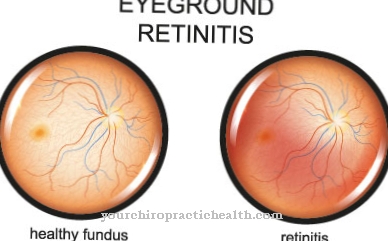
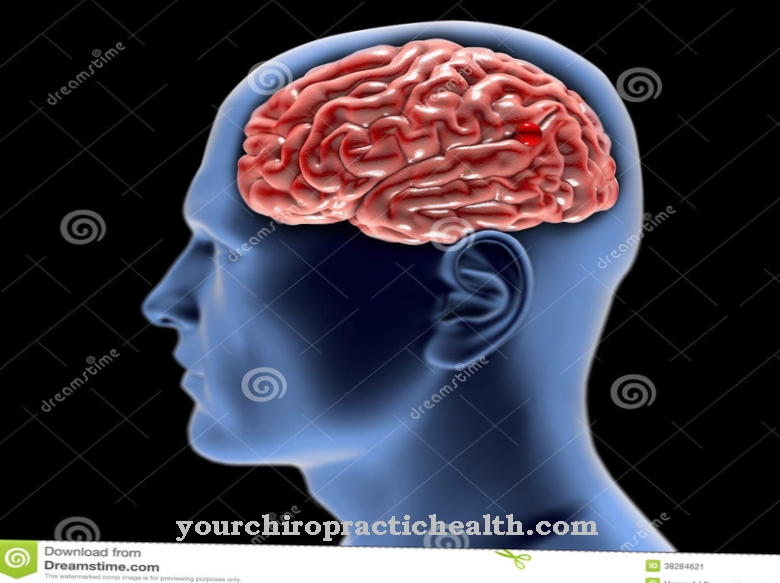
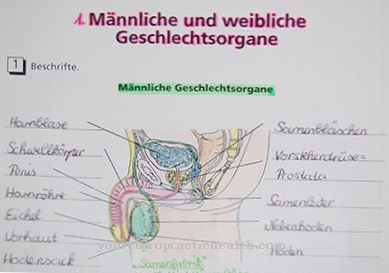
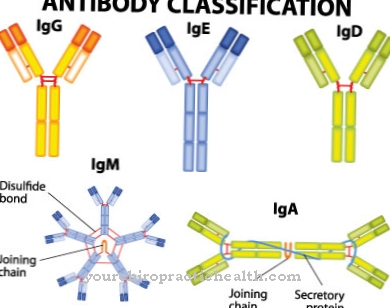
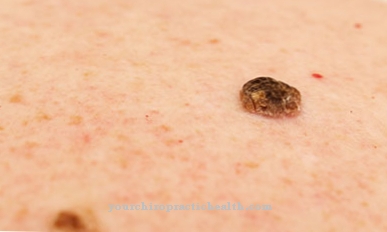






.jpg)

.jpg)
.jpg)











.jpg)